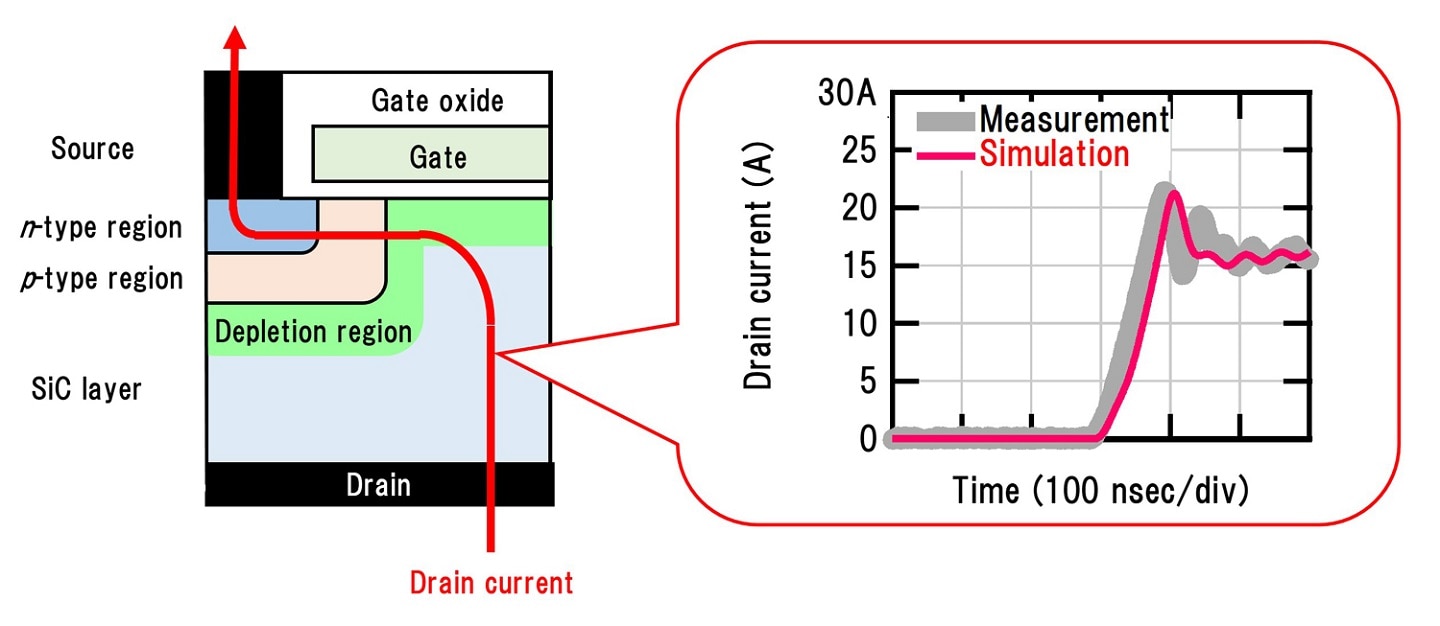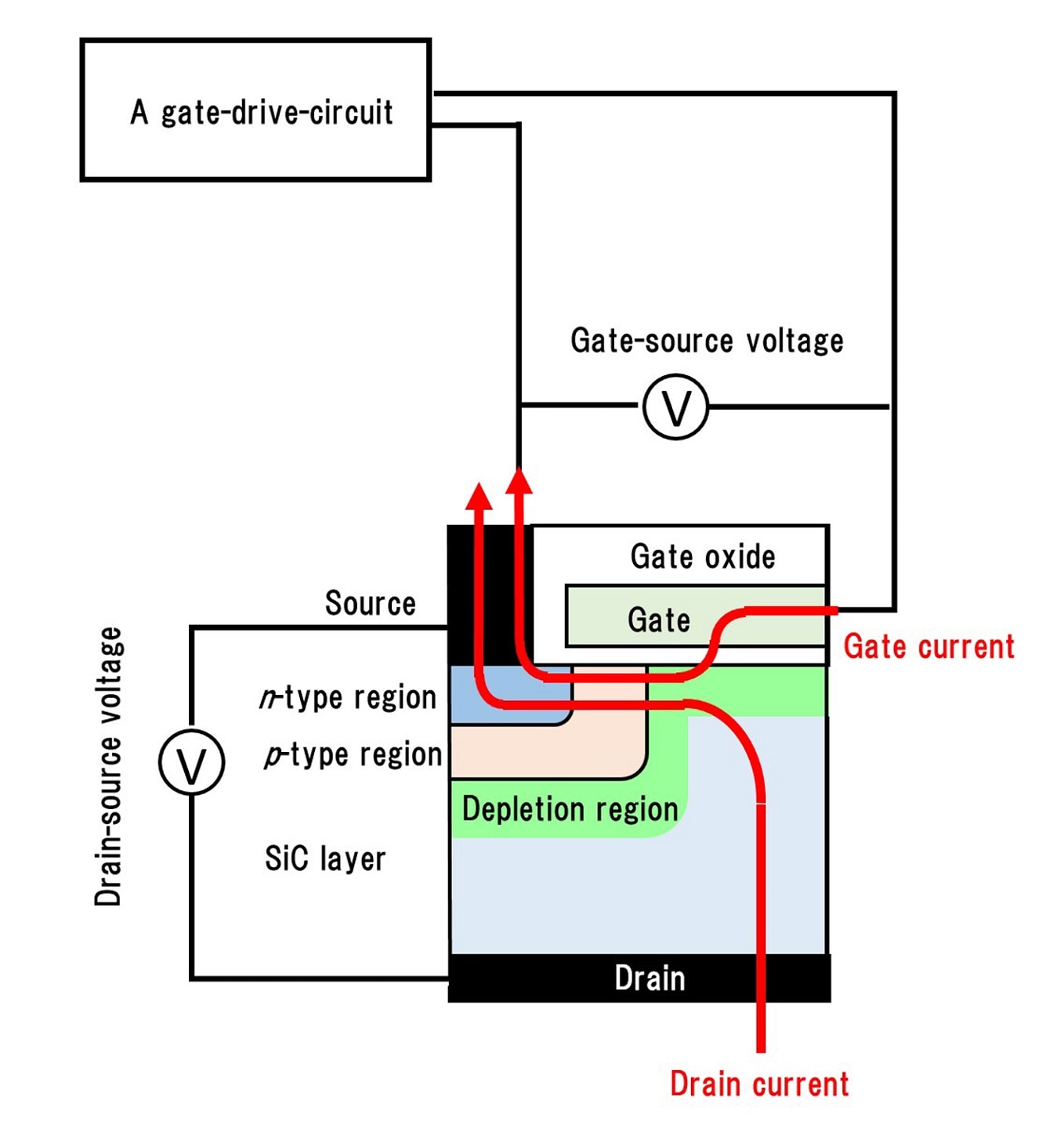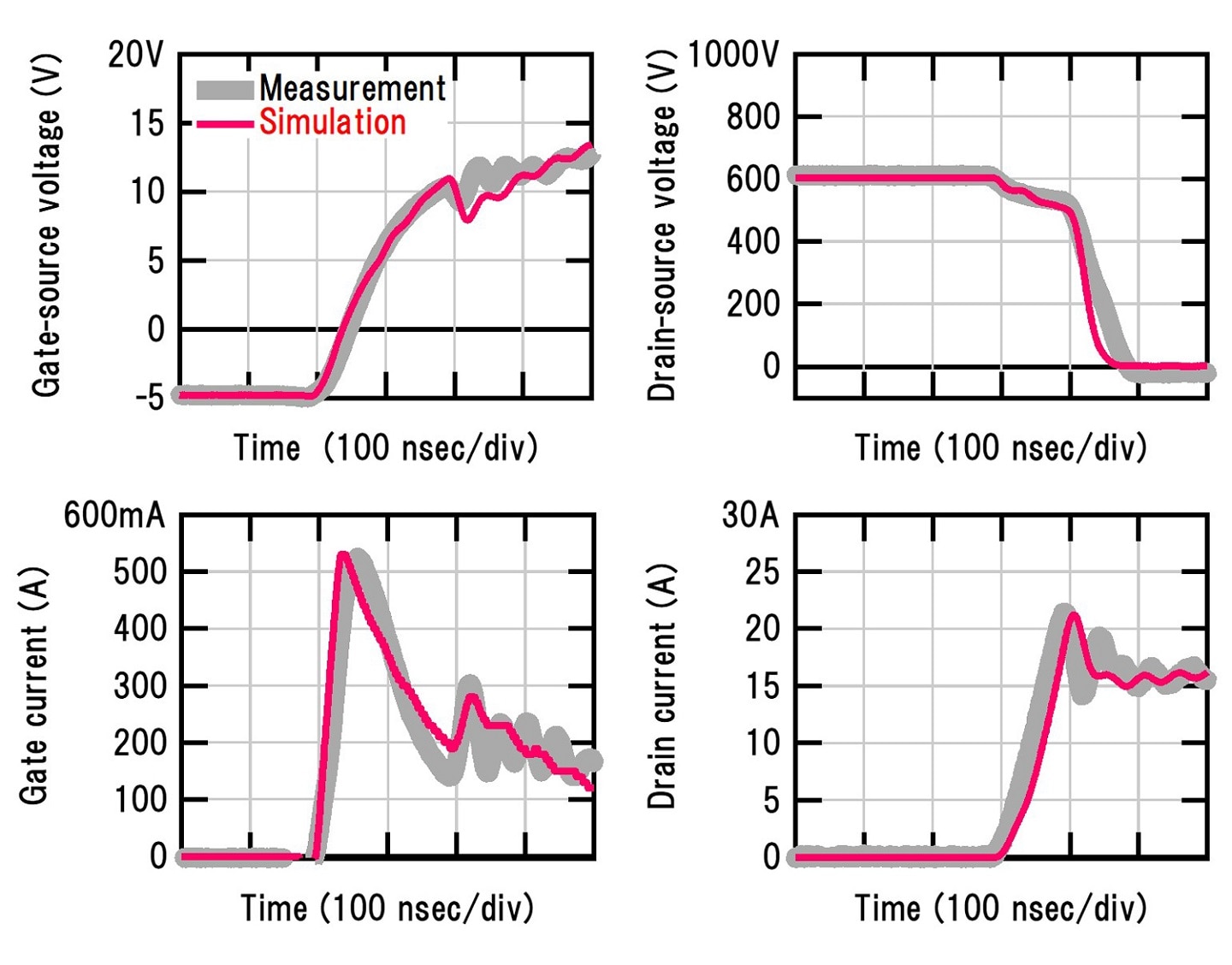News Releases
Mitsubishi Electric Develops Accurate Circuit Simulation Technology for SiC-MOSFETs Will contribute to more efficient circuit designs for power converters
FOR IMMEDIATE RELEASE No. 3362
TOKYO, July 9, 2020 - Mitsubishi Electric Corporation (TOKYO: 6503) announced today that it has developed a highly accurate Simulation Program with Integrated Circuit Emphasis (SPICE) model to analyze the electronic circuitry of discrete power semiconductors. The technology is deployed in the company's "N-series 1200V" SiC-MOSFET* samples of which will begin shipping in July. The model simulates high-speed-switching waveforms almost as well as actual measurements, on a level of accuracy currently believed to be unmatched in the industry, which is expected to lead to more efficient circuit designs for power converters. Going forward, Mitsubishi Electric expects to add several temperature-dependent parameters to enable its SPICE model to work at high temperature. The company presented the new model** on July 8 at the International Conference on Power Conversion and Intelligent Motion (PCIM Europe 2020), which was held online on July 7 and 8.
- *Silicon-carbide metal-oxide-semiconductor field-effect transistor
- **Conference presentation: T. Masuhara, T. Horiguchi, Y. Mukunoki, T. Terashima, N. Hanano and E. Suekawa. "Development of an Accurate SPICE Model for a New 1.2 - kV SiC-MOSFET Device"

Fig. 1 Cross-sectional view of SiC-MOSFET (left) and example analysis of switching waveforms (right)
(p-type: SiC layer implanted with aluminum ions; n-type: SiC layer implanted with nitrogen ions)
Characteristics of SiC-MOSFET

Fig. 2 Cross-sectional view of SiC-MOSFET
The SiC-MOSFET controls the current (drain current) flowing from the drain electrode to the source electrode depending on the voltage that is imposed on the gate electrode (Fig. 2). The MOSFET has parasitic capacitances that accumulate charges and determine switching speed. When a voltage is applied to the electrodes of the device, the capacitance values change due to changes in distance between the layers that accumulate the positive and negative charge changes, resulting in changes in the switching speed. When the distance between layers decreases, the capacitance value increases and the switching speed decreases, and conversely, when the distance between layers increases, the capacitance value decreases and the switching speed increases.
Key Features
- 1)Unique SPICE model enables efficient circuit design for power converters
Mitsubishi Electric's unique SPICE model performs highly accurate simulations thanks to the incorporation of carefully evaluated voltage dependencies of the parasitic capacitances. High-precision simulations of current waveforms are possible during high-speed switching, which was not achievable with the previous model. For example, for turn-on switching in which the SiC-MOSFET switches from non-conducting to conducting, the simulated waveforms of all voltages and currents are in good agreement with actual experimental waveforms. The error in drain current rise has been reduced from 40% to 15% (Fig. 3, on right).
The new model enables high-precision simulation of the drain current flowing through the power conversion circuit over the entire rated current range. Circuit designers can spend less time complementing data with experiments, raising work efficiency from the early stages of power converter development. The new model also achieves high-precision simulation of the current waveform (gate current waveform) driving the SiC-MOSFET, unlike in the past (Fig. 3, on left), making it possible to reduce costs by selecting optimum devices that assure sufficient current for driving the SiC-MOSFET.

Fig. 3 Example analysis of turn-on switching waveforms
Note
Note that the press releases are accurate at the time of publication but may be subject to change without notice.




